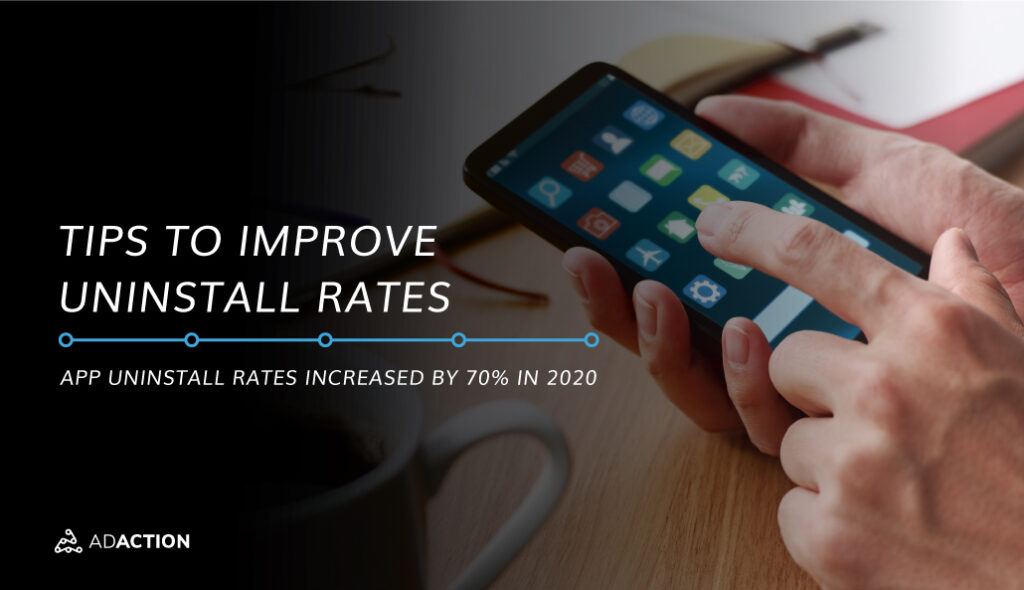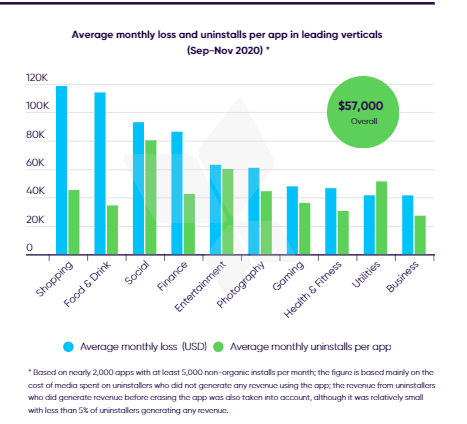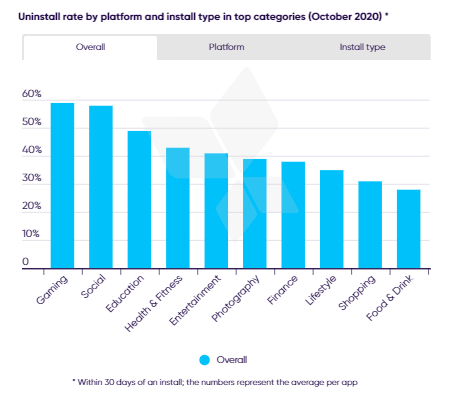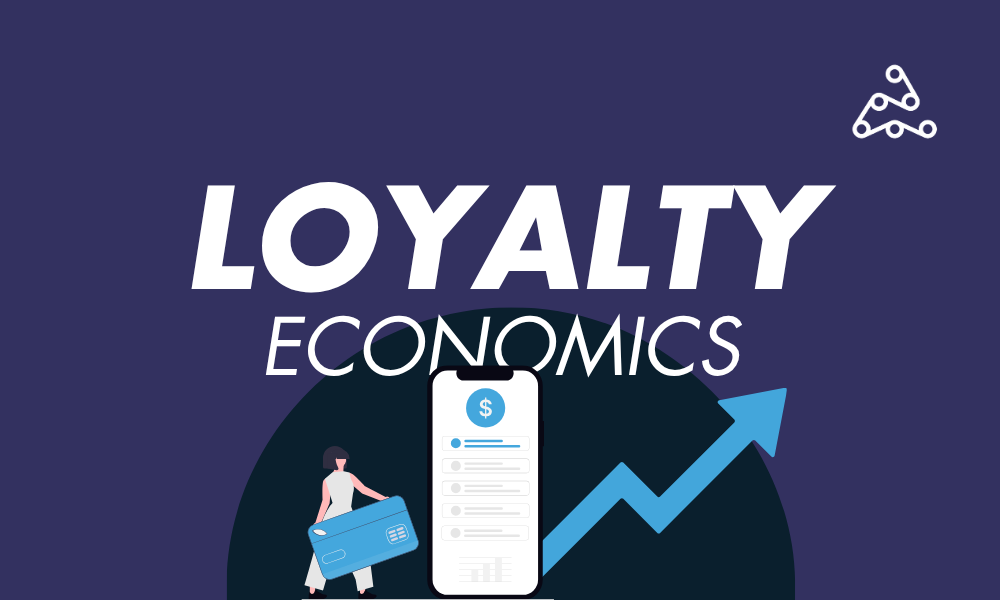2020 was full of impressive data around app usage. App downloads increased by 33%, demand for apps in diverse categories took off, and app spending hit $112 billion. The mobile app trends from 2020 look on the surface to be full of positives for the industry. Except app uninstall rates increased by 70% over 2019, according to data from AppsFlyer.
So, what does this mean for churn and retention? Let’s take a deep dive into the data to find the story. Then, we’ll provide some expert advice on how to maintain engagement to avoid uninstalls.
App Uninstall Data from 2020
The research provided a stark statement: users uninstall one in every two apps they download within 30 days. Further, 53% of uninstalls occurred within 30 days, while 45% happened within the first 24 hours!
The Context Behind Day 1 Uninstalls
Why do consumers uninstall an app on the first day? There are lots of possibilities. It could be a space issue, or users download the app to do one thing, then delete it. The most likely scenario is a failure to meet the customer’s expectations. Lack of onboarding and engagement leaves users immediately feeling detached from the experience.
The Cost of Uninstalls Hit Shopping and Food and Drink Apps the Hardest
Those uninstalls cost apps around $57,000 a month.
In the chart above, you can see that uninstalls hit shopping and food and drink the most regarding lost revenue. AppsFlyer noted that shopping and food and drink have high CPIs (cost per install), so the financial hit was harder. They actually fared better than other categories in the rate of uninstalls.
For shopping, there was a boon on app usage during the holiday shopping, as a new single-day record on Black Friday included 2.8 million downloads. The food and drink category rose in adoption during the pandemic, but that doesn’t transcend to loyalty of using an app to order takeout.
Uninstalls More Prevalent on Android
Looking at Apple vs. Android uninstall rate, Android had rates two times higher. There are a few reasons for this. Android devices have less storage than Apple devices. The quality of iOS app experiences is better due to Android having more frequent crashes and latency. This set of data also shows that non-organic installs had higher app uninstall rates.
Gaming Was the Leading Vertical for Uninstalls
The gaming category had the highest rate of uninstalls, with the biggest sub-categories hyper casual and casual. Deleting games isn’t a big deal to many users, who need more space. Whereas categories like shopping and food and drink had lower uninstalls because they are brands with connections to consumers beyond the app.
What can you learn from this data to improve your app uninstall rate and minimize churn while boosting retention?
Measuring Your Uninstall Rate
One of the first things you have to do to improve on this metric is measure it, and not all apps are doing this. You should track when and where it happens, looking at:
- What day of usage does the uninstall occur.
- The platform differences (Apple vs. Android).
- The source of the initial download (paid vs. organic).
Tips to Improve Uninstall Rates
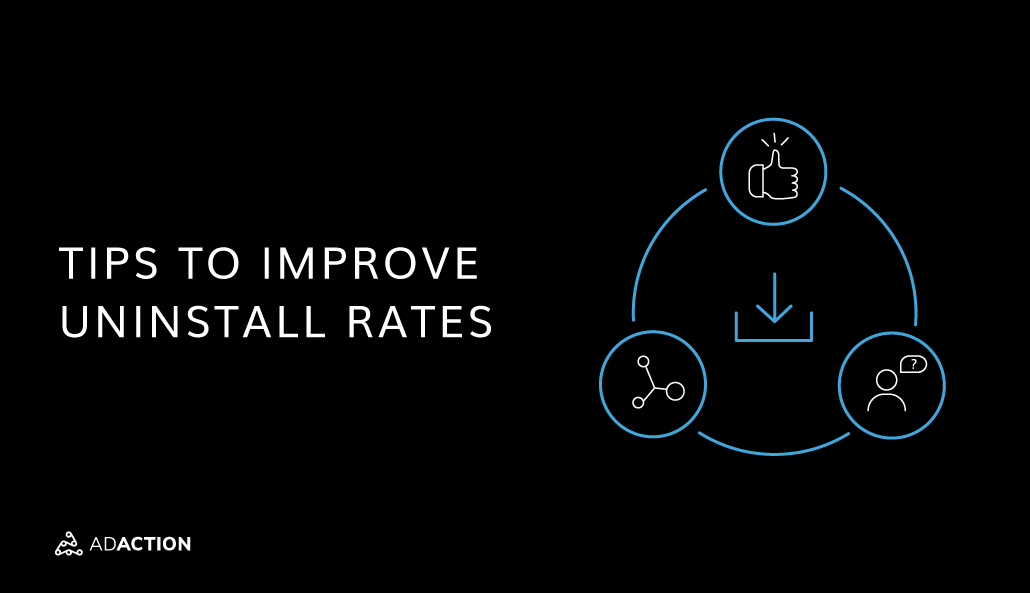
Once you have data and benchmarks, you’ll have more insight and context. You can then move into developing a strategy around retention.
Nail the Onboarding Experience: ASO and Offerwalls
The benchmark states most uninstalls happen on Day 1. Thus, you should create a compelling, helpful onboarding process. That first impression will go a long way to minimizing churn. You have to meet the expectation of your app store profile.
Does your App Store Optimization (ASO) align with the basic features and functions of the app? If not, that’s one thing to update. Add new videos and descriptions that preview the experience accurately.
You need to develop engaging interactions in those first few hours and days of the user downloading the app. One great way to do this is by using offerwalls.
Engage, But Don’t Overexpose
You certainly want to keep your app top of mind for new users. You can use various channels to create steady engagement, including push, retargeting, and social, but time these carefully to not risk overexposure.
Address User Concerns
App uninstalls can occur because the user experience was bad or any other negative. Your review section could be the most valuable data you have about user sentiment. You should track this and respond to it. What you learn can also improve your app’s features or functions so that new users don’t face the same obstacles.
Connect Usage and In-App Events
For uninstalls that happen later, you can find trends in usage and in-app events. Is usage declining after a certain point? You’re measuring deep-funnel events like reaching a level, reviewing a tutorial, and making a purchase. After these events occur, what does usage look like? Does it go up or down?
Connecting these data points can provide a more complete picture of how events and usage impact retention. You may want to plan more deep funnel CPE (cost per event) campaigns to re-engage inactive users and keep them from uninstalling.
Want to Improve Your App Uninstall Rate?
The most critical element in fighting user churn is to have specific strategies to keep people on your app. When they uninstall, you suffer financial losses. Thus, it’s wise to be ahead of this as much as possible.
Our app retention experts can help. Contact our team today to learn about our performance-based marketing inventory.
